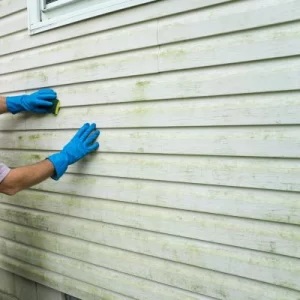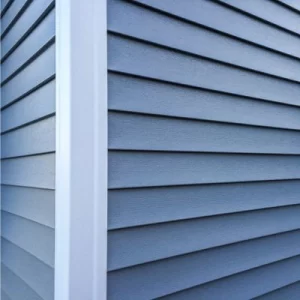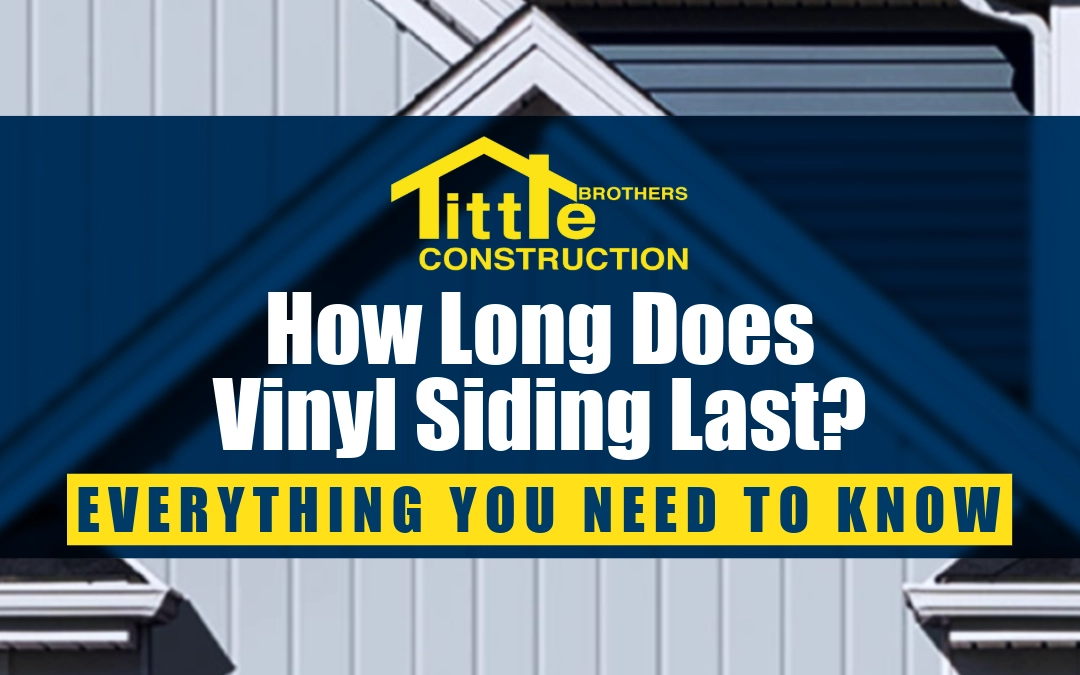What can you expect when installing siding on your home? Understanding vinyl siding life expectancy, factors impacting its lifespan, and signs indicating it needs to be replaced can help you get the most out of your siding investment, keeping your home protected and looking great for decades.
The Expected Lifespan of Vinyl Siding
Vinyl siding was developed in the 1950s as an alternative to aluminum siding. In the early years, these products were prone to sagging, fading, buckling, and cracking, which led to skepticism among builders and homeowners. Later, manufacturers began investing in advanced production processes to boost performance and durability.
Today’s vinyl siding is engineered with PVC (polyvinyl chloride) resins, which are highly resistant to weathering and UV damage. It is also more resistant to impact damage. Over the years, it has become the most popular choice for homeowners in the US.
Vinyl siding should hold up for between 20 and 40 years, depending on the material quality, degree of maintenance, and the local climate. That said, premium vinyl siding tends to have a longer lifespan than builder’s grade vinyl.
What Affects the Lifespan of Vinyl Siding?
Even though vinyl is a durable siding material, many factors can affect its performance and longevity.
Material Quality
The thickness of your siding will also define its durability and weather resistance. The thicker the material, the higher the durability and the longer the siding will last. It is crucial to choose higher-grade vinyl from reputable manufacturers who have proven themselves as industry leaders. It tends to stand up well to the elements and lasts much longer than lower-quality options.
Level of Maintenance
Like most siding materials, vinyl requires periodic maintenance and upkeep to preserve its appearance and ensure its longevity. Periodic cleaning is needed to prevent the build-up of dirt, mold, and mildew, which can cause the siding to degrade over time. Inspect your siding regularly and make necessary repairs to ensure there are no cracks, holes, or gaps, which could allow moisture to seep in and cause structural damage.

Environmental Factors
Michigan’s climate, with its hot summers, cold winters, and extreme temperature fluctuations, plays a significant role in the longevity of your vinyl siding. When exposed to freezing weather, vinyl siding becomes brittle over time, increasing the risk of cracking. The summer heat can cause vinyl to expand, potentially buckling or warping, especially if the installer didn’t leave enough room for movement. Snow, ice, and rain contribute to moisture infiltration, while harsh winds loosen or damage the panels.
Quality of Installation
You must hire a skilled and reliable siding contractor in Southeast Michigan to ensure your siding will protect your home for years. Improper installation could lead to warping, buckling, and water damage, which could mean getting a premature siding replacement.
How to Know When to Replace Your Home’s Vinyl Siding
The elements your siding deflects daily will eventually take their toll. Even the most durable, properly installed, and well-maintained vinyl siding will need to be replaced at some point.
Here are warning signs that it’s time for a replacement vinyl siding.
Extensive Damage
If sections of your siding show signs of significant damage, such as extensive warping, large cracks, or bubbling paint, it may be time to replace it. These issues are caused by old age, improper installation, and weather exposure. While minor repairs can help extend your siding’s lifespan, extensive damage often warrants a complete siding replacement.
Rot, Mold, and Mildew
Finding mold, mildew, or fungus on the exterior of your home is a clear sign of water intrusion and could be grounds for getting new siding ASAP. Even the most minor holes and gaps can allow water to penetrate your siding and seep through the wood underneath, compromising the structural integrity of your home.
Increased Utility Costs
Vinyl siding helps regulate your home’s temperature. Old or damaged siding allows heat to enter in the summer or escape in the winter, which could explain why your energy bills have soared.
Severe Fading
Exposure to snow, rain, and the sun’s UV rays can cause your vinyl siding to lose color and develop a dull appearance.
While a coat of paint may sometimes be enough to restore your siding’s appearance, severe fading could indicate your siding is approaching or already past its expected lifespan. Older siding could expose your home to extensive and costly damage because the material’s weatherproofing is becoming weak or wearing down.

Get Top-Quality Vinyl Siding Today
Are you ready to replace your damaged or old siding with a durable material that can withstand Michigan’s weather conditions? At Tittle Brothers, we use high-quality products and offer excellent workmanship to keep your home in top shape for years to come.
Contact Tittle Brothers in Southeast Michigan to schedule a consultation and get more details on vinyl siding replacement for your home.



